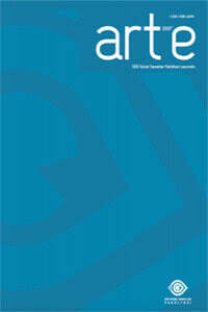SOMUT OLMAYAN KÜLTÜREL MİRASIN TESPİTİNDE, SAHA ÇALIŞMASI ÖNCESİ VE SONRASI UYGULAMALARIN KRİTİK ÖNEMİ
Kültürel antropolojide alan çalışmasının yazılı bir ürünü olan etnografya, araştırmacının alanında olmazorunluluğu taşımaktadır. Ayrıca alan araştırması yöntemi, genellemelerden çok derinlemesineayrıntıların ortaya koyulduğu bir yazındır. Bunun yanında amaçlanan konunun yapısal işleyişi, temsiledilişleri hakkında yazmaktır (Erickson, 1984:53). Bu kritik çalışmanın tekrarı yoktur ve öncesinde iyiplanlanması tüm çalışmayı doğrudan etkiler. Bu plan dahilinde etnograf alanda verimli çalışabilir. Tümverilerin toplanması sonrası da kodlama, tasnif ve kuramsal yorumlamalar da çalışmanın zenginliğini ifadeeder.Bu çalışma somut olmayan kültürel mirasın tespitinde, saha çalışması öncesi ve sonrası uygulamalaradeğinerek, kritik önemini vurgulamak amacı taşımaktadır. Ayrıca saha çalışması öncesi ve sonrasıizlenecek aşamalarda detaya girilmektedir.
SIGNIFICANCE OF PRE- AND POST-FIELDWORK PRACTICES IN IDENTIFYING INTANGIBLE CULTURAL HERITAGE
In ethnography, which is a written product of the cultural anthropological fieldwork, it is necessary for the researcher to be in his/her field. Moreover, the field study method produces a literature that puts forward in-depth details rather than generalizations. In addition, it tackles the structural functioning and representations of the topic at hand (Erickson, 1984:53). It is impossible to re-do the field study and preliminary planning directly impacts the entire study. Within the scope of this plan, the ethnographer may efficiently conduct the field study. Following the collection of all data, processes of coding, classification and theoretical interpretation express the richness of the study. The present study aims to touch upon pre- and post-fieldwork practices and highlight their significance in identifying intangible cultural heritage. It also elaborates in detail the stages to be followed before and after the field study.
___
- Bernard, R. (1994). Research Method in Anthropolgy: Qualitative and Quntative Approaches. 2nd Ed.Thousand Oaks Ca: Sage Publications.
- Bernard, R. (2006). Research Methods İn Anthropology, U.K.: Altamira Press, Oxford.
- Emiroğlu, K. ve Aydın, S. (2003). Antropoloji Sözlüğü, Ankara: Bilim ve Sanat Yayınları.
- Erickson, F. (1984). What Makes School Etnoghraphy “Etnographic”?, Antropology and Education Quarterly, Vol.15, p.51-66.
- Kümbetoğlu, B. (2005). Sosyolojide ve Antropolojide Niteliksel Yöntem ve Araştırma, İstanbul: Bağlam Yayınları.
- Marcus, G. E. (1992). Rereading Cultural Antropology, London: Duke University Press.
- Pink, S. (2007). Doing Visual Ethnography, London: Sage Publications.
- Schechner, R. (1974). "From Ritual to Theatre and Back: The Structure/Process of the EfficacyEntertainment Dyad", Educational Theatre Journal, 26:4, p.455-481.
- Smith, P. (2005). Kültürel Kuram, Babil Yayınları, İstanbul.
- Spindler, G. D. (1954). Education and Anthropology, California: Stanford University Press, Stanford.
- Spindler, G. D. (1987). Education and Cultural Procees, Anthropogical Approaches, Second Edition, Waveland Press Inc.
- Spradley, J. P. (1980). Participant Observation, U.S.A.: Harcourt Brace & Company.
- Tümertekin, E. (2007). İstanbul İnsan ve Mekan, İstanbul: Tarih Vakfı Yurt Yayınları.
- Yayın Aralığı: Yılda 2 Sayı
- Başlangıç: 2008
- Yayıncı: Süleyman Demirel Üniversitesi Güzel Sanatlar Fakültesi
Sayıdaki Diğer Makaleler
SOMUT OLMAYAN KÜLTÜREL MİRAS PERSPEKTİFİNDEN ANALAR, TANRIÇALAR VE ANADOLU
KÜLTÜREL MİRASIMIZDA GELENEKSEL TÜRK SANATLARI BAĞLAMINDA "MOTİF" OKUMALARI
KÜLTÜREL MİRAS FARKINDALIĞI BAĞLAMINDA "GELENEK GELECEKTİR”
SARIKEÇİLİ YÖRÜKLERİNDE TOPLUMSAL UYGULAMALAR VE MEKÂN-ISPARTA / ATABEYGÖNEN ÖRNEKLERİ
Mustafa GENÇ, Seda ŞİMŞEK TOLACI
SARIKEÇİLİ YÖRÜK DOKUMALARININ RENK KONTRASTLIKLARI AÇISINDAN TASARIM KURGUSUNUN İNCELEMESİ
YEME- İÇME KÜLTÜRÜ MEKÂNLARI: PEKMEZLİK / PEKMEZ DAMI, ANTALYA ÇUKURKÖY ÖRNEĞİ
